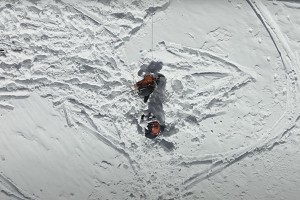
In this review, Jack Geldard takes a look at a set of avalanche gear from Mammut including their transceiver, shovel and probe.
This equipment is essential safety gear for back country skiers and climbers and could save your or your partner's life.
When travelling in back country terrain, most skiers and climbers carry at least a transceiver, shovel and probe. This is the basic equipment needed to dig or get dug out of an avalanche.

It goes like this:
You get avalanched and buried in snow. You have just a few minutes to live before you are suffocated. Your friends locate you with their transceivers. They find your exact location by sticking their probes in the snow. The dig you out with their shovels.
There are many different transceivers on the market, and luckily they all can 'find' each other. Transceivers are not to be confused with 'Recco' jackets, these just send out a signal, but can't be used to find anyone buried in the snow. Good if you are close to the ski piste where the ski patrol might find you, but useless for big mountain travel.
Pulse Barryvox Transceiver (RRP £350):

What is an avalanche transceiver?
Avalanche transceivers are a class of radio transceivers specialized to the purpose of finding people or equipment buried under snow. They are variously called Trackers, Pieps, or Arva's in a reference to some of the popular brands, "avalanche beacons" or "avalanche transceivers" - with many regional slang terms in effect. When transmitting, the device emits a pulsed signal which another transceiver can receive. Due to the nature of the radio pulse, a person holding the receiving beacon can orient it, and home in on the location of the transmitting beacon using techniques similar to radio direction finding.
Early avalanche beacons transmitted at 2.275 kHz (2275 Hz/Hertz). In 1986 the international standard of 457 kHz, a higher radio frequency, was adopted and remains the standard today. Many companies manufacture beacons that comply with this standard.
An avalanche beacon is not considered a preventative measure for possible avalanche burial, but rather it is a way to reduce the amount of time buried.
Pulse Barryvox Info:
Combination of a digital and analog device with three antennas. Easy. Fast. Effective. Easy. Clear instructions thanks to an easy operating concept. Fast. Fast and precise locating thanks to a 360° display and three antennas. Effective. A significant time saving, thanks to a clear overview in situations involving multiple buried victims.
Firmware 3.20 with 2 user profiles.
- 2 user profiles, on a Basic and Advanced basis
- Optimized distance and direction display
- Numbering of marked buried people
- Fine-locating with additional distance aid
- Protection against accidental switching from SEARCH to SEND
- Frequency verification during group test
- Acoustic signal upon initial reception
Basic Profile
- Digital mode
- List showing number of victims
- Digital acoustic signal for quick and easy locating
- Marking of located victims
Advanced Profile in case of multiple buried victims
- Digital and analog mode
- Option to scroll manually through list of buried people
- MapView display: overview of number, distances and locations of subjects
- Selection of the subject based on distance and survivability criteria
- Marking of located victims
- Analog search with acoustic signal on built-in speaker (full analog mode with manual sensitivity control)
Technical Details:
Range approx. in m: > 60
dimensions in mm: 113x75x27
Batteries: Alkaline 3 x AAA 1.5 Volt
Warranty in years: 5
W-Link Frequency: EU 868.8 MHz - USA/CAN 916-926 MHz
Optimally suitable for:
Skitouring / Backcountry Skiing, Expeditions, Freeriding / Boarding, Education / Rental, Classical Alpinism, Winterhiking / Snowshoeing, Mixed- and Iceclimbing, Alpine Skiing
Suitable for:
Nordic Skiing, Polar Expeditions
In short an avalanche transceiver is a device which helps you find people buried in the snow. It's an emergency device.
The Mammut Pulse Barryvox is, despite its complex name, extremely easy to use and hugely accurate. It is intuitive and simple, which is exactly what you are looking for in an avalanche emergency situation.
Why is it good?
The Pulse has three settings: Off (pretty obvious!) Send (sends out a signal) Search (looks for 'sending' transceivers). Having never used it before, I went for a blind test run. My friend hid a transceiver (on Send) and I switched my transceiver to Search. Less than 20 seconds later I had found the hidden transceiver (in the oven!).
The on screen instructions were obvious and simple to use in an emergency situation, even though I had no clue what they were going to be.
Out on the mountain:
I have not used this transceiver in a real-life avalanche, however I have used it for many days off-piste skiing, ski touring and alpine climbing.
- The device is accurate and easy to operate with gloves on.
- The battery lasts for at least 40 days on the hill before it needs replacing (and this is in low temperatures).
- The harness it comes with is robust and easy to use.
What sets it out from the crowd?
The Mammut Pulse Barryvox can deal with 'multiple burials'. That is, if more than one person is buried, then those people who are not buried can search for more that one person at once. I could be searching for 'Dave' whilst my friend is searching for 'Barry'. With more simple transceivers, they just point everyone to the nearest buried device, which can slow down a team search.
In short:
This is one of the best transceivers on the market. It does everything you need it to do, it works well, lasts a long time, comes with a good carrying system, and can deal with multiple burials.
A strong recommendation.
Online transceiver training:
Mammut has an excellent page on their website where you can practice your transceiver searching skills.
- Practice here: Mammut Website
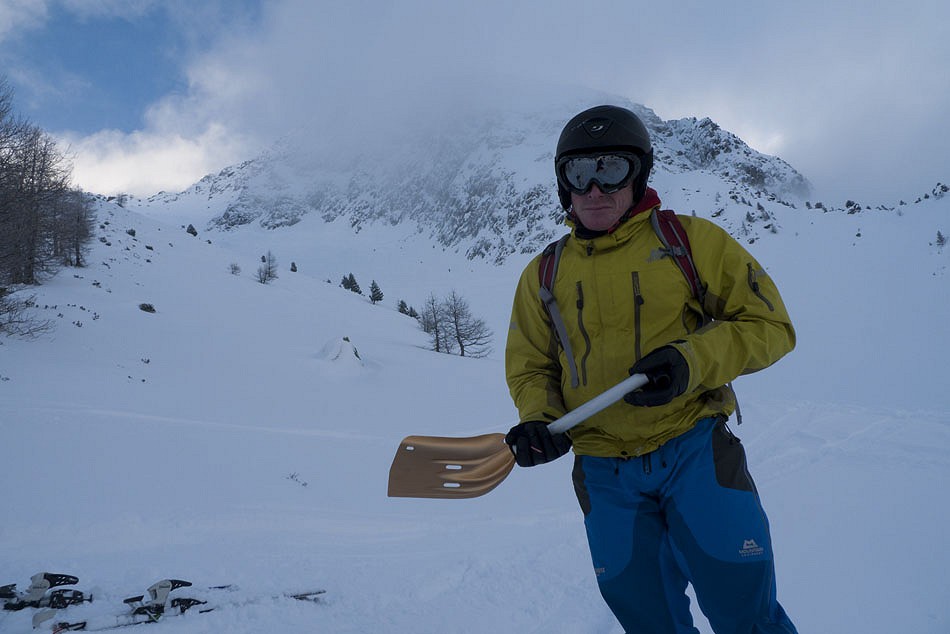
Alugator Super Light Info:
Lightweight shovel made from hardened and anodized aluminum. The shaft receptacle integrated in the shovel blade enables an extremely stable design with very small packing mass. The triangular-shaped shaft absorbs torsional forces ideally and offers good grip.
| length in cm | collapsed: 59 cm / extended: 59 |
|---|---|
| dimensions in cm | packed: 21.5 x 43 cm / blade area: 21.5 x 26 |
| weight in g | 600 |
- Hardened and anodized aluminum shovel blade
- Extra small packing volume thanks to integrated shaft receptacle in the blade
- Large excavating angle for ideal lifting action and efficient shoveling
- Ergonomic T-grip at the end of the shaft
- Stabilization ribs for maximum rigidity
- Shaft shape offers clear guidance for fast readiness for use and absorption of torsional forces
- Attachment holes for snow anchor
Alugator Super Light Shovel (RRP £45):
You need a snow shovel for several different things. Digging people out of avalanches is perhaps the most important, but the most infrequent. Digging snow holes when alpine climbing is pretty important but usually fairly infrequent. Resting your stove on whilst alpine climbing is not that important but can happen quite a lot, and digging out your car after a big dump is never life threatening, but seems to happen more than any of the other activities mentioned above!
It is with these tasks in mind that I review the Mammut Super Light Shovel.
What is it?
It is a lightweight shovel made from hardened and anodized aluminum.
Good points:
- Extremely well made
- Very strong
- Metal construction
- Light weight
- Can be used as a snow anchor
Bad points:
- Non-extendable handle
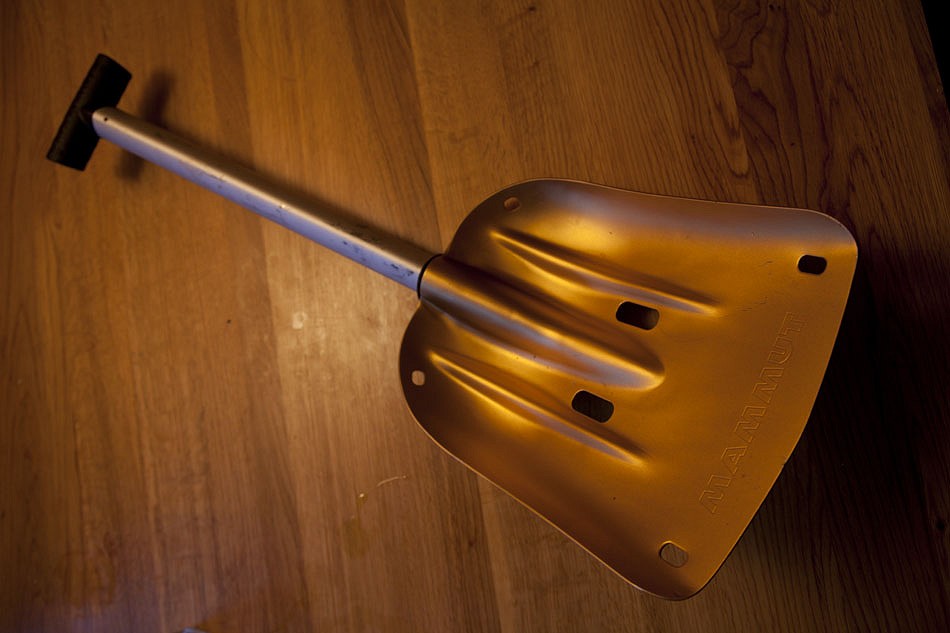
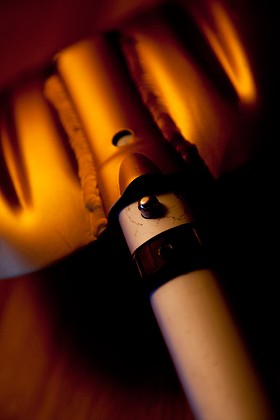
I would avoid plastic snow shovels if at all possible. They may be slightly lighter in weight, but if your friend is buried in an avalanche and you snap your shovel trying to dig him out, then 200gmweight saving isn't worth much. Metal shovels will last longer, can be sometimes used as snow anchors and are stronger.
Look for a shovel that has a good usable handle. An extendable shaft can also be useful, but only if it is sturdy enough to withstand the extra leverage. Remember snow and ice are heavy.
The Mammut Super Light Shovel:
This is an excellent piece of kit. It is solid, sturdy and remarkably lightweight. The shovel fits easily in to a small skiing backpack, and clips together easily.
It is a few extra details that make this product stand out; the metal shovel has small holes in that will allow a sling to be threaded through, meaning the shovel can be used as a snow anchor. Also, the clip point where the handle meets the blade is very well designed. The location point is angled so that the shovel can be clipped together really quickly and easily, with a pair of gloves on. Whilst this isn't essential, it just shows that Mammut have actually put the time in to make this a really good product.
The handle is a fixed length, and this means it is strong and light, but you do miss out on the ease of use/added leverage of an extendable handle.
In short:
A spade may be a spade, but this is a bloody good one!
Mammut Probe Plus 280 Info:
- 7-piece aluminum probe
- Dyneema cord for minimum weight
- Telescopic lock for quick and easy interlock
- Drop-shaped probe tip
- Suitable for use with gloves
- Special packaging with instructions and emergency plan
Mammut Probe Plus 280 (RRP £55):
The Mammut Avalanche Probe Plus 280 is the middle length of the three Mammut probes available (240cm, 280cm, 320cm). Personally I would not recommended carrying a probe less than 280cm in length, and would probably opt for the longest of the three if I was buying a probe. The reason? The only disadvantage of a longer probe is weight, and a few extra grams could save your partners life.
The probe itself:
The Mammut probe plus is a well made probe. It is constructed from aluminum (some probes are now carbonfibre and are lighter, but not as strong).
It has a good solid construction, a simple design, and a robust tip. It splits in to 40cm segments, held together with a simple yet light and strong dyneema cord joining system that works well. The probe itself has 10cm markers, so you know how far you are plunging, and was up to the job when I tested it in firm snow.
It comes in a stuffsack with some emergency procedures illustrated on the side, which is a nice extra feature.
At 210gm, the probe is a good compromise between strength and lightweight.
In short:
A good, well made probe of a medium length. If you are travelling in extremely snowy areas then go for a longer probe.




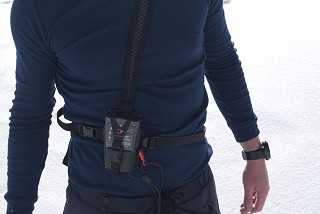
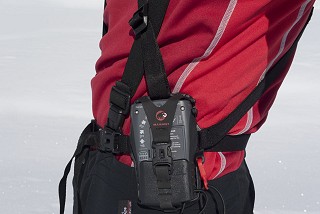

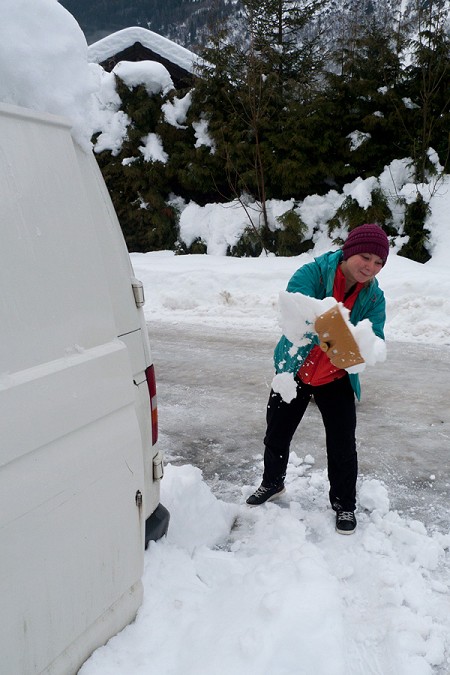
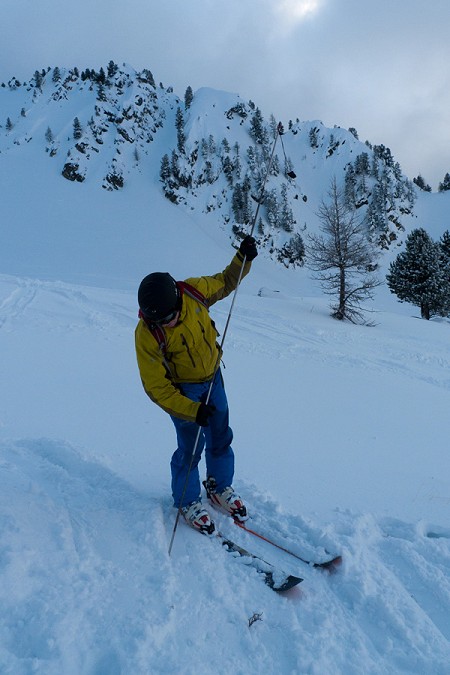

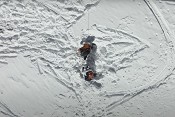
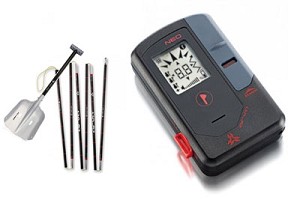
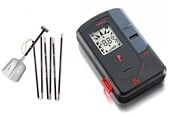

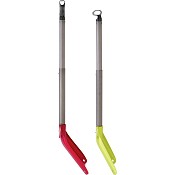
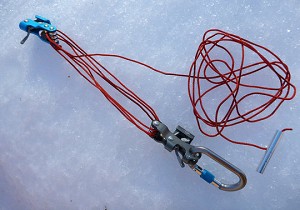
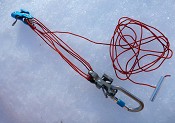
Comments